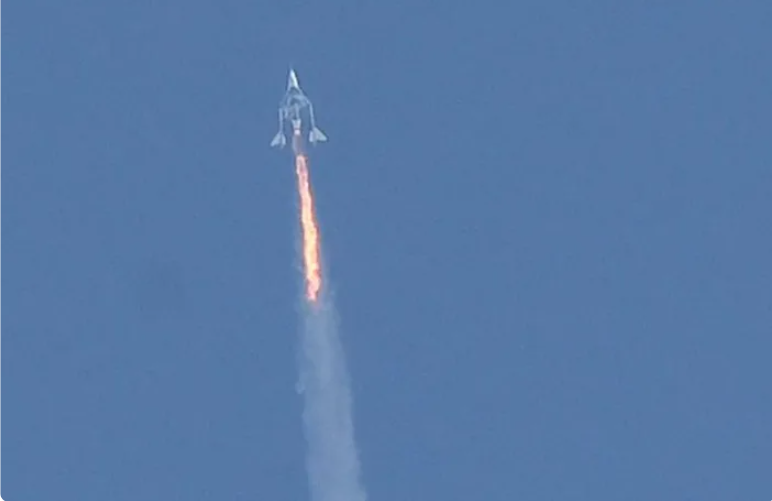After flying its founder Richard Branson to space, Virgin Galactic is restarting ticket sales beginning at $450,000, the company announced Thursday.
The new price is about double the $200,000 to $250,000 paid by around 600 people who previously booked seats on Virgin’s spaceship between 2005 and 2014, as the company looks to cash in on the success of last month’s fully-crewed test flight.
“We are excited to announce the reopening of sales effective today,” said CEO Michael Colglazier in a statement, with first dibs going to people on a waiting list.
“As we endeavor to bring the wonder of space to a broad global population, we are delighted to open the door to an entirely new industry and consumer experience.”
On July 11, Branson beat Blue Origin owner Jeff Bezos to space in a battle between the billionaires. Bezos achieved the feat nine days later.
The next test flight will come in September and involve members of the Italian Air Force.
There will be one further test after the September mission, then the first commercial flights will take place in the third quarter of 2022, Colglazier said in an earnings call.
The offerings for customers will include a single seat; multi-seats for couples, friends or family; and a full-flight buyout.
Two free seats on an early flight are up for grabs in a prize draw, with registrations open until September 1.
The spaceplane was originally designed to carry six crew, but last month’s flight, which was described as “fully-crewed,” had just four — suggesting this is the current number.
Virgin’s space experience involves an air-launched spaceplane, VSS Unity, that takes off attached to the belly of a massive carrier plane from a runway at Spaceport America in New Mexico.
After gaining altitude, the spaceplane detaches from its mothership and ignites its rocket engine, ascending to beyond 50 miles (80 kilometers) above sea level.
Passengers unbuckle and experience a few minutes of weightlessness before the plane glides back to the runway to land.
The company has come under fire for its carbon footprint, which is roughly equivalent to a transatlantic flight but for far fewer people. It has said it is examining the possibility of offsetting its emissions.
“Our long term objective is to offer a near-daily cadence of space flights, and not just from New Mexico, but from multiple locations around the world,” CFO Doug Ahrens said during the call.



Comments are closed.